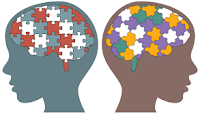The Severity Levels of Autism

RE: "What's the difference between level 1 autism and high-functioning autism?" The DSM 5 (Diagnostic and Statistical Manual of Mental Disorders, 5th Edition) specifies the severity levels of Autism as follows: Level 1: Requiring Support— • Social Communication: With supports in place, deficits in social communication cause noticeable impairments. Has difficulties initiating social interactions, and demonstrates clear examples of atypical or unsuccessful responses to social overtures of others. May appear to have decreased interest in social interactions. [Note: Level 1 autism is most commonly referred to as high-functioning autism.] • Restricted Interests and Repetitive Behaviors: Rituals and repetitive behaviors (RRB’s) cause significant interference with functioning in one or more contexts. Resists attempts by others to interrupt RRB’s or to be redirected from fixated interest. Level 2: Requiring Substantial Support— • Social Communicatio

